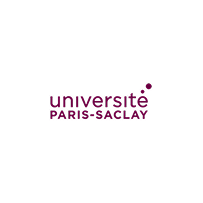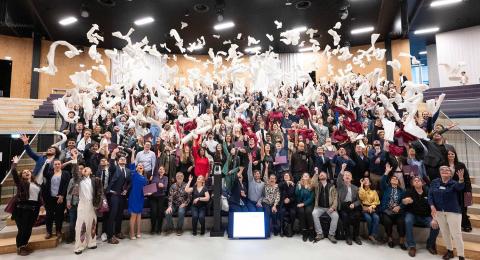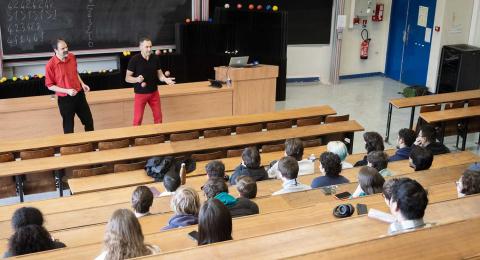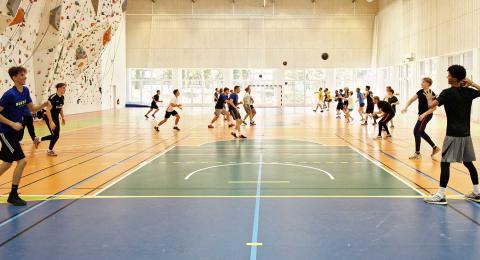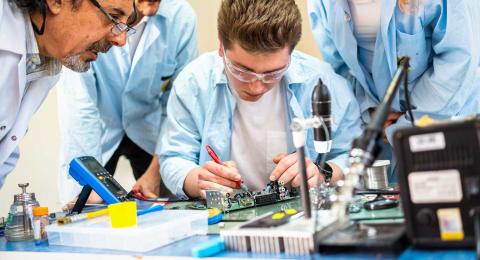Bioinformatics / Computational Biology
The Master in Bioinformatics trains research and development experts at the intersection of biology, computer science, and mathematics. Students acquire sought-after skills in data analysis, modeling, and artificial intelligence across various areas of bioinformatics—genomics, structural biology, evolutionary biology, digital health, etc.—and apply their knowledge to projects in the life sciences, medicine, environmental sciences, and agronomy.
The Master in Bioinformatics tracks are organized by semester, and each semester is structured into knowledge and skills blocks. Each block includes both core modules and applied modules built around the concepts to be acquired. A mandatory internship is required each year: in M1 (2 to 4 months) and in M2 (4 to 6 months).
Information
Master’s Year 1
Master’s Year 2
The targeted knowledge and skills correspond to those defined in the RNCP38964 reference framework.
We provide a synthetic overview below:
-
Select, evaluate, and optimize computational and statistical methods from data science and artificial intelligence to analyze large-scale and heterogeneous biological data.
-
Analyze a biological or biomedical problem and design an appropriate model or solution, either by using existing computational and statistical methods or by developing new ones.
-
Integrate into a project and work collaboratively by applying project management methodologies.
-
Explain and present, both orally and in writing, a project, scientific results, or the outcome of a literature review, in French and English.
-
Adhere to principles of ethics, professional conduct, social and environmental responsibility, and data security.
All of these skills are first formally introduced and then **applied in practice through various projects** using diverse and real-world datasets.
Learning outcome targets
The Master in Bioinformatics is focused on the advanced research and development needs of companies and research organizations in bioinformatics, biostatistics, and biotechnologies, as well as in the life sciences and agronomy. This multidisciplinary program addresses these needs by training specialists at the interface of biology, computer science, and mathematics.
Upon completion of the Master’s program, students master several programming languages, along with a range of methods in algorithms, artificial intelligence, statistics, and databases, enabling them to store and analyze massive genomic and biomedical datasets (Big Data). They also deepen their expertise in key areas of bioinformatics (systems biology, structural biology, functional genomics, etc.) and apply the methods learned to diverse projects in the life sciences and medicine, as well as in environmental sciences and agronomy.
Graduates are able to:
-
Understand current challenges related to complexity and diversity in biology and the life sciences in general, and excel in research and innovation across the academic, pharmaceutical, biotechnological, agri-industrial, and healthcare sectors;
-
Address new challenges arising from the rapid evolution and development of high-throughput data production technologies, stemming from multiple and heterogeneous sources;
-
Master information technologies associated with the analysis and modeling of biomedical data;
- Independently lead application development projects in multidisciplinary contexts, using various programming languages, proposing innovative computational solutions, and carrying out the necessary analyses and developments to test new methods and hypotheses in the life sciences.
Target audience
In terms of prerequisites, the Master in Bioinformatics welcomes students from undergraduate degrees in biology, mathematics, computer science, or equivalent, with a strong motivation for multidisciplinarity.
The M1 BIBS-IA track offers extensive, tailored remedial courses depending on the students’ backgrounds, thus opening the Master to students coming from both single-discipline (biology, mathematics, computer science) and multidisciplinary Bachelor’s degrees. Courses are taught in French.
The M1 GENIOMHE-AI track primarily recruits students with a multidisciplinary profile, expected to have skills in both biology and digital sciences (computer science or applied mathematics). Courses are taught in English.

